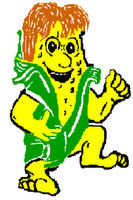 Over the past month I have been reflecting a lot on food. The food I eat, the people who prepare and grow my food and how this basic need of food is connected to so many social justice issues. I grew up in small farming communities surrounded by corn, soybeans and a little livestock. A large number of my classmates were farm kids where all gatherings were scheduled around their chores. My high school mascot was the Cornjerker, which was a big ear of corn that ran out on the field (you can’t make this stuff up). So as I think about food and farms it is to that traditional back drop of the small family farm in communities where I was raised.
Over the past month I have been reflecting a lot on food. The food I eat, the people who prepare and grow my food and how this basic need of food is connected to so many social justice issues. I grew up in small farming communities surrounded by corn, soybeans and a little livestock. A large number of my classmates were farm kids where all gatherings were scheduled around their chores. My high school mascot was the Cornjerker, which was a big ear of corn that ran out on the field (you can’t make this stuff up). So as I think about food and farms it is to that traditional back drop of the small family farm in communities where I was raised.
However, our current farming is moving further and further away from that image of the small family farm where food is grown and becoming more about commodities. I am referring to commodities as crops that are designed more for livestock feed, bio-fuel, and export and also often benefit from large subsidies. Even in Hoopeston, IL, one of the Sweet Corn Capitals of the World (yes, there is more than one small town which makes this claim); they have to buy their sweet corn from outside the community for the annual Sweet Corn Festival. Hoopeston does still have family farms but most of the crops are commodity driven, some of which does eventually make its way to my dinner table, but typically in a form much different from what I see in the fields driving home.
The questions I have been thinking on in my personal life include:
-
- Where do I spend my food dollars and who is being supported by those choices?
- What do I prepare and what is included both from a health and a justice perspective?
- Where do I eat out and where does that food come from and how are the people who prepare the food treated?
- How is food impacting the environment?
- How is our food impacting people’s lives in other countries?
- How can I and others have more control over our food options?
Each of these questions are complex and not always a clear choice when making food decisions on a limited budget. I also have been focusing on what else, beyond my food choices, I can include in my lifestyle and actions. How can I be including issues of food justice into my actions and beliefs on other social justice work? For example I could join or support efforts like Immokalee Workers in their 200-Mile March ending in Lakeland, FL at the Publix Supermarket headquarters this week.
I can find out how the farming communities where I grew up have been impacted by the changes in our food industrial system. What are those farm kids I went to school with doing now? I am looking forward to blogging about some of these topics in the coming months as I struggle with the challenge of how to find a balance between my budget, beliefs and actions. Obviously I don’t have all of the answers but I believe that change for me and for the overall social change movement is created through small and large steps. These steps can evolve into a more balanced lifestyle and a balanced just global food system. I made several changes to my lifestyle and eating habitats 20 years ago after first becoming aware of the conflicts and complexities of the food system. I think that it is time to go through another period of change to explore what else I can be doing.
Now when I remember back to my high school days of the Cornjerker running out onto the field, I think of the family farms that are no longer around, the seeds which are controlled by multi-national corporations, the commodity crops that are designed for mass produced livestock instead of our dinner table and how hard those farmers struggle who are working to provide us quality healthy food options in our local communities. It makes me wonder what that Cornjerker ear of corn represents. It feels like instead the ear of corn being jerked off the stock, that we as consumers and many farmers are the ones being jerked around.